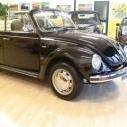I prossimi modelli Alfa Romeo (Notizie) - Riassunto nel 1° messaggio
Aggiornato al 07/10/2021
• 2023
949/Stelvio MCA
952/Giulia MCA
• 2024
Kid/B-UV: SUV di segmento B, disponibile anche in versione BEV che debutterà nel 2023
➡️ RUMORS TOPIC
🚧 WORK IN PROGRESS 🚧
-
Contenuti simili
-
Il futuro dei siti produttivi Stellantis 1 2 3 4 840
Pubblicato da The Summarizer,
- stabilimenti
- psa
- (e 1 altro in più)
- 8391 risposte
- 1274711 visite
-
Alfa Romeo new “Bottega” 2026 (Notizie) 1 2 3
Pubblicato da AleMcGir,
- prossimi modelli
- alfa romeo
- (e 3 altri in più)
- 23 risposte
- 3892 visite
-
I prossimi modelli Alfa Romeo 1 2 3 4 293
Pubblicato da Beckervdo,
- alfa romeo spy
- stellantis
- (e 2 altri in più)
- 2925 risposte
- 573706 visite
-
-
-




.thumb.jpg.902d2a4f20a129e92b6f6920407b81bd.jpg)











.thumb.jpg.46228d717c405acd43b45b79fddce6a4.jpg)





Messaggi Raccomandati: